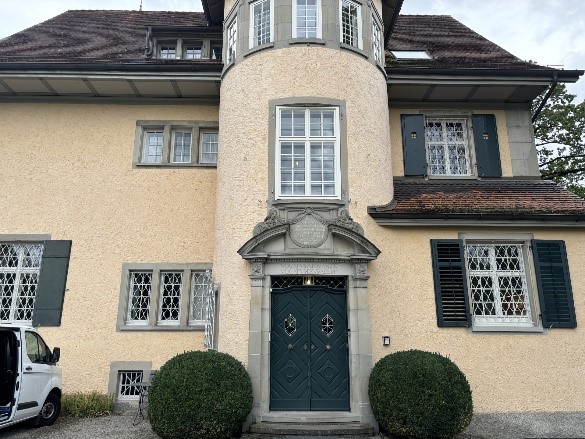From the Frontlines of Research and Studies [Switzerland]: ŌMURA Kazuma (International Research Center for Japanese Studies)

The National Institutes for the Humanities (NIHU) sends young scholars, who are participants in Institute-based projects and co-creation initiatives, to international seminars and research institutions abroad, including universities. This program aims to promote NIHU’s projects and support young scholars in their academic studies, presentations at international seminars, and other overseas research opportunities.
In this issue, we feature a report from ŌMURA Kazuma of International Research Center for Japanese Studies, who was dispatched to Switzerland.
I stayed in Zurich, Switzerland from August 15 to September 17, 2024, with support from the National Institutes for the Humanities’ (NIHU) NIHU Program for Young Researcher Overseas Visits. During my stay, I was based at the Institute of Asian and Oriental Studies (IAOS) at the University of Zurich (UZH).

A number of factors led me to choose Switzerland as my destination. My studies have focused on the twentieth-century German critical theory movement led by such figures as Theodor Adorno (1903–1969), Max Horkheimer (1895–1973), and Jürgen Habermas (1929–). Since assuming my post at the International Research Center of Japanese Studies in the spring of 2023, I have also been researching acceptance of the critical theory in postwar Japan.
Take, for instance, Adorno and Horkheimer’s thesis that “enlightenment reverts to mythology.” As proposed in their [1944] work Dialektik der Aufklärung, available in English as Dialectic of Enlightenment, trans. John Cumming (New York: Herder & Herder, 1972), the authors argued through the thesis that knowledge and science bring prosperity to humanity, but underpinning this prosperity are violence and domination. Their argument is accordingly known as a critique of modernization—a process that advances science and promotes development—and, interestingly, it has also been key to examining both the Hiroshima and Nagasaki atomic bombings and postwar Japan’s economic growth under the US military umbrella.
But what exactly does Adorno and Horkheimer’s thesis mean by “mythology”? To thoroughly examine this question, one needs to understand how the Western world discussed mythology at the time of the book’s publication. This is the very reason why I chose to visit Switzerland. Zurich was the epicenter of discourse on mythology in the twentieth century, and was home to such intellectuals as Ludwig Klages (1872–1956)—who rediscovered the significance of mythologist Johann Jakob Bachofen (1815–1887)—and Carl Gustav Jung (1875–1961), who examined mythology from a distinctive perspective.

While basing myself at UZH during my stay and collecting relevant resources, I visited the Museum C. G. Jung House to meet its manager Andreas Jung. I also engaged in interchange with IAOS scholars, and found that academics in Europe have an interest in postwar Japan’s intellectual discourse. My goal from here on is to publish my achievements based on the research I conducted in Zurich.
ŌMURA Kazuma
Born in Kyoto, ŌMURA Kazuma received a doctoral degree in political science from the Dōshisha University Graduate School of Law in March 2023. He currently serves as a research fellow at the International Research Center for Japanese Studies. His main work, co-authored with KARITA Shinji, is “Kindai shuken kokka ni okeru haijo to sabetsu no ronri [The Logic of Exclusion and Discrimination in a Modern Sovereign State],” in Sabetsu no kōzō to kokumin kokka: Shūkyō to kōkyōsei (Shirīzu: Shūkyō to sabetsu, dai-1 kan) [The Structure of Discrimination and a Nation-State: Religion and the Public Sphere (Series: Religion and Discrimination, Volume 1)], eds. ISOMAE Jun’ichi, YOSHIMURA Tomohiro, ASAI Akehiko, et al., Kyoto: Hōzōkan, 2021.
